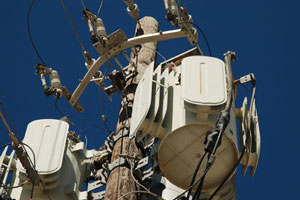Arno's EnergyIdeas (2)
About the effectiveness and evaluation of networks
This is the second edition of "Arno's energy ideas" by Arno A. Evers, founder and long-time until 2006 organizer of the Group Exhibit "Hydrogen + Fuel Cells "at the annual HANNOVER FAIR in Germany since 1995. Until 2010, Evers and his team are worldwide active to speak, exhibit or participate in hydrogen and fuel cells congresses as ambassadors of the Group Exhibition, contracted by Deutsche Messe AG. All these activities are documented on the Internet and are updated regularly.
More and more, mostly state-funded, networks are active worldwide to implement hydrogen and fuel cells into “real life". In Germany, they usually work at the state-level, but they are also known as: "Alliances," "Initiatives ..." or "Joint Implementation Groups..." in other states, EU-funded and even internationally. Some of these networks have existed since the early 1970s, such as the International Association of Hydrogen Energy (IAHE) headquartered in Coral Gables, FL, USA.

Our photo shows a “distribution transformer" of 13.8 kV to 120/220 volts in Texas, USA. Note the cooling elements, which are “needed” to dissimilate the heat from the body of the transformer…(Photo: Arno A. Evers, Arno A Evers FAIR-PR) |
Even in Canada there are hydrogen alliances which have been active for more than thirty years. Others arise worldwide these days, with more or less administrative friction losses at different levels. The efficiency of these activities - which often are heading to: "cost targets," "milestone plans," or "Lighthouse Projects" - will be judged by technology historians in a hopefully not-too distant future. However, as we have seen, the "timeline" of these plans and models are usually relatively flexible.
There are other large physical networks, which we use daily, yet more unconsciously. Only in a so-called "electrical crash" will they come into consciousness. I am referring to the power generation and electricity distribution networks. In Germany, electricity is produced at central power stations. The energy carrier is either nuclear energy (27 percent) or fossil fuels (lignite: 23 percent, coal: 21 percent, natural gas: 12 percent), or via “AC feeding points” from renewable energies (wind energy: 5 percent, hydropower: 4 percent, biomass: 3 percent, photovoltaic: 0.3 per cent) or with oil, pumped storage and others (5 percent). All figures according to the Federal Association of Energy and Water Resources (BDEW) for 2006.
The technology used to produce electricity is not at all new; it emerged at different speeds with the onset of the industrialized worldwide. The efficiencies reached here are rather poor. In Germany the use of renewable energy to produce electricity is only somewhat economical due to the support of high subsidies, which in turn, are financed compulsory by all electricity users by a German law.
Even after the production of electricity, the game gets worse: the distribution of electricity to the end users: as in industry, commerce and households requires in Germany four grid circuits of different voltage and lengths: 1,070,000 km of low-voltage network, 494,000 km medium-voltage network, 36,000 km high-voltage network, and 36,000 km maximum-voltage grid (total: 1,674,700). But that's not enough: in order to distribute the electricity between the individual voltage areas, all operating at 50 Hz alternating current (AC), there are 557 000 medium-voltage transformers, 7,500 high-voltage transformers and 1,100 maximum voltage transformers (total: 566,300 units) working around the clock. The conversion losses created here are immense. They are neither counted nor discussed, they are sort of “taken for granted.” All figures from the Association of Network Operators (VDN), and BDEW, according to the associations, "only estimates” ...
This "hardware inventory" primarily belongs to four electricity companies in Germany, except for a few, currently still negligible companies. More and more frequently, we hear voices raised in Germany for the unbundling of the operation of the electricity distribution network from the companies who are operating the electricity generation power plants; these new network operators must first create a serious “opening balance”. The question is: How can the existing hardware correctly be evaluated? I also wonder: who should or who can do that? And what time is needed to do so?
In view of this data, it would be much more sensible to have a consistently distributed energy production not only to discuss, but also actually be invested by the utilities. If the future path will lead directly to solar generated hydrogen, produced without electrolysis or reforming, the need of the above mentioned production and distribution infrastructure will be obsolete one day. This is a meaningful goal for which it is worthwhile to strive.
Date: 04.12.2007
Links to news:
https://www.hydrogenambassadors.com/background/facts.php
http://www.iahe.org |
